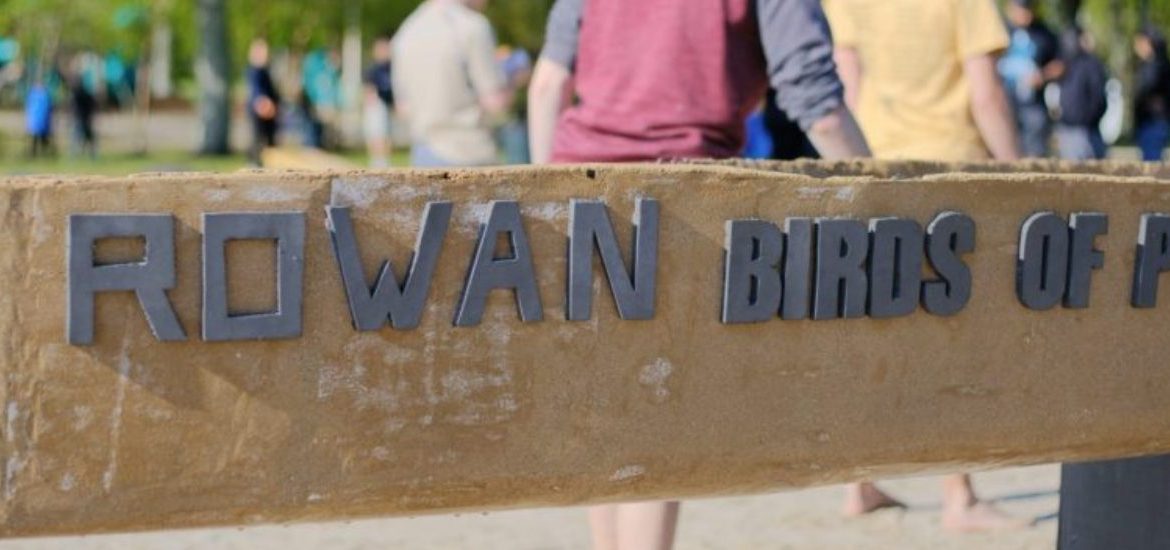Civil Engineering Majors Learn, Network & Race in ASCE Competition
In the annual concrete canoe competition, Rowan University Civil Engineering students and the American Society of Civil Engineers, alongside engineering students from other schools in the area, compete. Each engineering team must determine what kind and mixture of lighter materials they should combine with the concrete to keep their boats floating, to overcome the issue of concrete being heavier than water. Here we have an inside look at a concrete canoe through the eyes of two Rowan University students.
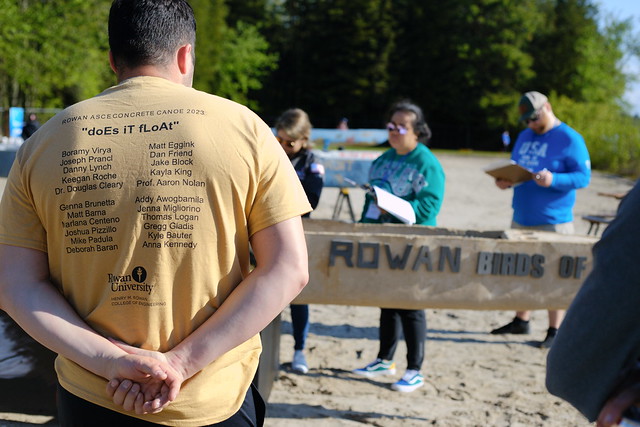
Starting off we have Debbie Baran, a senior civil engineering major at Rowan University. She says about her major, “I decided to go into civil engineering because I was really good at math. I went to an engineering summer workshop at another university as a high schooler, and I really liked it. And I just decided to go with it.”
Debbie went on to illustrate her future plans with her engineering degree, sharing, “I actually already have a job. I’m working for South State Construction. After I graduate, I’ll be a project engineer. So basically we’re just going to be managing different construction projects. For example, this past summer I interned with them and we were doing warehouses, road widening, and new traffic lights too.”
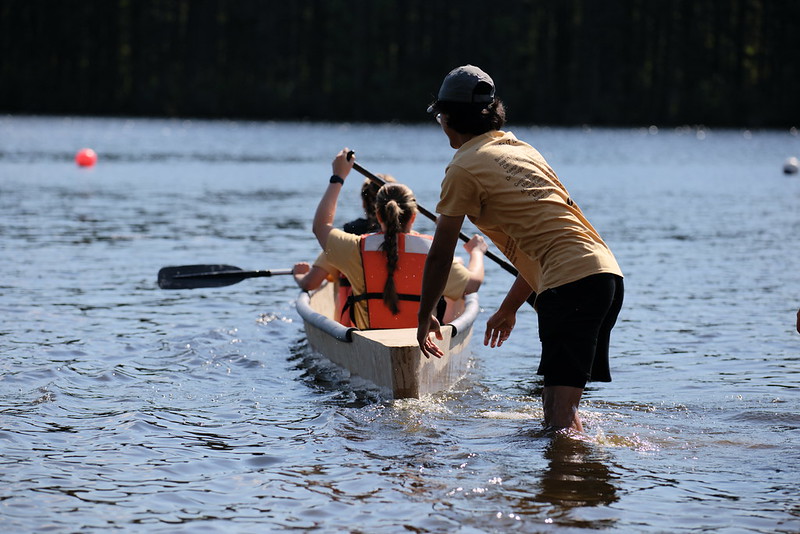
Continuing on when asked to elaborate a little bit about what ASCE is, Debbie painted a clear picture. Explaining, she says, “ASCE is the American Society of Civil Engineers, so it’s a club that Rowan and anyone can participate in, but it’s mostly civil engineers who participate in it. They hold competitions like this one, which is a three-day competition. And basically, it’s just to get involved in the major itself. It’s perfect for networking and finding connections, for not only internships and jobs, but also just for post-graduate life, staying within the discipline and being involved.” She went on to add that her choice to join was “because I really wanted to make connections with people in rowing, with professors, but also with my classmates.”
Debbie went on to talk more about what comes along with the concrete canoe competition itself stating, “For example, if we win first place in this competition, we get to go to Wisconsin and compete in a finals competition and it’s all paid for and everything. So it’s really a fun time and it’s a great experience.” She went on to set the scene for the day’s race, “We have the straight-away race, so it’s a 200-meter race and you have to go up and back. There’s a girls team and there’s a boys team. That’s the first race just up and back straight. And then there’s the Sloan race, which is the obstacle course. You have to basically bob and weave throughout the BU out there. And then there’s also a coed race, which is a 400-meter race. So there’ll be two boys and two girls participating in that, and I’m looking forward to it.”
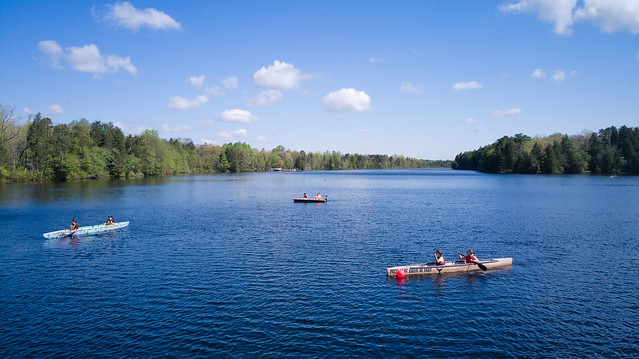
When questioned about some of the difficulties faced during the competition, Debbie responded, “Well, this boat is cumbersome, so that’s the main difficulty. It’s really difficult to turn in it and kind of point the boat in the correct direction that you want to go. It also doesn’t help because the current on the water and the wind are kind of pushing you in opposite directions that you want to go. So I would say overall steering and going in the correct direction is the hardest, when you’re on a straightaway that’s the easiest part because then you can just power through and pick up that speed. But we had to go slow around the turns and it really messes you up. Talk about the communication that you have to have with your person so the person behind you if they’re in the back, it’s hard for them to see which way the tip of the boat is pointed. So the person in the front really has to take over the vocals of the team and kind of lead directions, like give me a row on this side, on the left or on the right to make sure you’re going in the correct direction.”
Switching gears we also have Matt Eggnick, another civil engineering student here at Rowan, who recently graduated in May. Matt opened up about the concrete canoe competition, stating, “It’s a lot of teamwork, hard work, dedication to make the canoe and get to this point. Then we compete.”
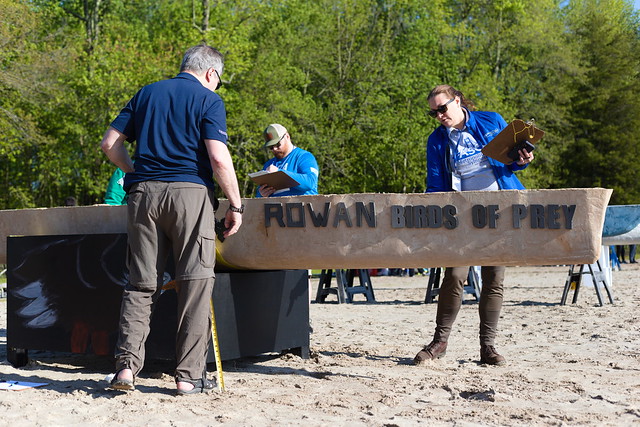
He went on to add, “This is a society-wide competition and the winner will go to nationals in Wisconsin.”
When asked to elaborate more on what goes into making a concrete canoe, Matt explained that it all centers around buoyancy and figuring out how to make the thin layers of concrete work with different mixes of mesh and ultimately float while in water.”
Matt went on to share that he thinks the most significant part of the competition aside from building the canoe itself is communication amongst the team. He went on to add how he believes this coincides with civil engineering because if you’re working in a construction setting, you’re constantly communicating with the people in the office, with the people in the field, and with the designers of the plan as well.
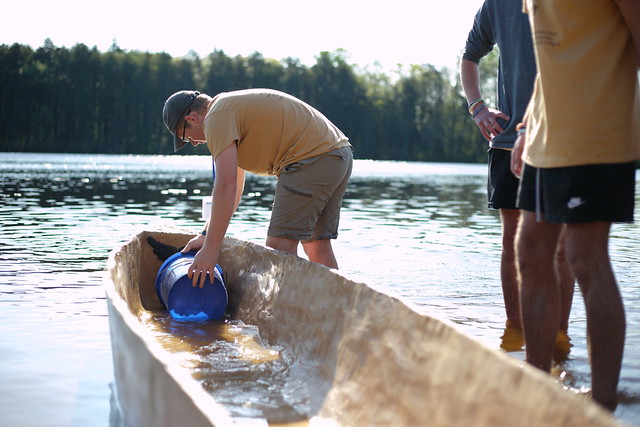
Nonetheless, both Debbie and Matt can agree that the concrete canoe competitions give Rowan civil engineering students vital training and skills they need as they head out into the workplace, as well as the chance to bond with other students and make so many friends while here on campus. After graduation, Matt started with R.T. Pearson Construction in Project Management.
Debbie concluded with a heartfelt sentiment to incoming engineering students, “Everyone’s just out here to have a good time, regardless if you win or lose or how well you compete. There are a lot of activities going around all around us, so it’s good to see everyone out here collectively having a good time. I think incoming freshmen should join the ASCE club, especially if you’re a civil engineer because it introduces you to friends right from the start of your freshman year.”
Like what you see?

